3.0 Septic Tank Do's and Do Not's
The septic system like any engineered process requires proper use and maintenance. This section provides information on the proper care and use of your septic system. At a minimum, the septic tank needs to be pumped out every three to five years. If you decide to not maintain your system here is what you should look forward to:
1. Falling septic system can be a threat to public health and the environment, especially your drinking water supply or nearby recreational waters.
2. Reduces YOUR Property Value and has a negative aesthetic impact.
3.The system is expensive to repair and may require frequent pumping of your septic tank, possibly the installation of a holding tank, or the possibly that you have to MOVE OUT of Your HOME.
4. Frequent back-ups of sewage or sewage gases into your home.
A few warning signs that you may have a problem:
- Sewage water surfacing over the drainfield or disposal bed.
- Slow drainage of sinks and toilets, piping clogs, frequent back-ups, and need for very frequent pumping.
- Very green grass or growth and wet to saturated soil conditions over drainfield. Foul smell and sewage odors.
3.1 DO NOT
- Add excessive amounts of harsh chemical to the system. Normal household cleaners in normal amounts should harm the system, but highly concentrated solutions or toxic chemicals may upset the system.
- Do not drive, park, or store heavy objects over the on-lot subsurface disposal area.
- Do not pour cooking oils, lard, cooking fats or greases down the drain. Try to separate this waste and dispose as part of the household trash.
- Do not connect cellar drains, sump pumps or rain downspots to the septic tank system.
- Put disposable diapers, sanitary napkins, tampons, or other materials containing non-biodegradable substances into the system.
- Do not waste water and do not install high water use device without determining the capacity and capability of the system.
- Do not concentrate water usage, spread out high volume use throughout the week. This would include eliminating wash day and it would be better to run dishwashers and clothes washers on separate evenings or low water use periods.
- Do not plant trees over or near the soil absorption systems. Roots could clog or damage the drainage pipes.
- In general, septic tank cleaners or enzymes are not needed for residential systems and by no means should this replace the regular septic tank pumping schedule as shown in Table 3. In some cases, these cleaners cause the sludge blanket to be carried into the absorption bed, which causes the absorption area to become clogged.
- Never turn off and aerobic tank, even if you are going away for a short trip.
3.2 Do
- Install a properly designed and sized system. If possible, it would be advisable to consider installing additional septic tank capacity and a slightly large soil absorption field. If a maintenance plan is not provided by the designer or township, it would be advisable to have your design consultant prepare a maintenance plan for your system.
- Properly use and maintain the system, which includes pumping the septic or aerobic tank, inspecting the system, cleaning laterals and/or delivery lines, and other maintenance items specific to the system.
- Divert surface water and roof runoff away from the septic tank and soil absorption area.
- Take showers rather than a bath and install low flow water conservation devices.
- Operate dishwashers and cloth washers with only full loads and spread out the water usage throughout the week. It is better to run these machines many times during the week rather than on the same day. NO MORE WASH Day ! Also, consider running these devices during periods of low water usage.
- Maintain records regarding the original site testing, permitting, design, inspection, maintenance, and repairs to the system.
- Avoid construction on wet soil. If the soil is worked while wet smearing and increased compaction could greatly reduce soil permeability and infiltration rate.
- The pumps for pressure distribution systems with an audible and visual alarm to alert you to problems.
We are in the process of setting up Face-to-Face Courses. We will be scheduling courses in soil science, soil morphology, hydric soils, and water sampling.
Current Featured Course
Field Training Course Scheduled for August 15, 2025 (Register Here)
Hands on Field Training Course Describing Soils

KnowYourH2O is a global educational and outreach web portal that empowers private well owners, city water users, and citizen scientists through fact-based tools, hands-on training, and accessible resources—covering both indoor and outdoor water quality concerns.
KnowYourH2O.com created by BF Environmental's founder Brian Oram, licensed professional geologist.
Whether you're a homeowner, business owner, or citizen scientist, the web portal is your guide on the Path to Clean Water. “Get Informed, Get Tested, Get Treatment” and take meaningful action toward clean water stewardship. Visit to Learn More.

